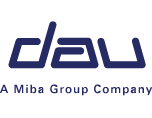Global Alpha 1 Antitrypsin Deficiency Treatment Market Report 2020 with COVID-19 Impact Insights
DUBLIN, Dec. 22, 2020 /PRNewswire/ -- The "Alpha 1 Antitrypsin Deficiency Treatment Market: Global Industry Trends, Share, Size, Growth, Opportunity and Forecast 2020-2025" report has been added to ResearchAndMarkets.com's offering.
https://mma.prnewswire.com/media/539438/Research_and_Markets_Logo.jpg
The global alpha 1 antitrypsin deficiency treatment market grew at a CAGR of around 9% during 2014-2019. Looking forward, the global alpha 1 antitrypsin deficiency treatment market to continue its strong growth during the next five years.
Alpha-1 antitrypsin (AAT) deficiency refers to a genetic disorder due to which the body does not produce sufficient AAT protein. AAT protein is essential for protecting the lungs and liver from the adverse effects of other proteins in the body. Patients with severe AAT deficiency may develop liver cirrhosis, chronic obstructive pulmonary diseases (COPD) and emphysema diseases. It can be diagnosed through a genetic or a blood test. Some of the treatment methods include augmentation therapy, pulmonary rehabilitation and oxygen therapy that use medicines, such as bronchodilators and corticosteroids, which can be injected intravenously or inhaled.
The increasing prevalence of respiratory disorders is one of the key factors driving the growth of the market. Furthermore, widespread adoption of augmentation therapy is providing a thrust to the market growth. This therapy involves extracting AAT protein from a healthy donor's blood plasma for increasing AAT levels in the respiratory tract of patients. In line with this, this treatment also delays the progression of emphysema, minimizes the frequency of exacerbations and improves recovery speed, which, in turn, is contributing to its increasing preference among both the patients and healthcare providers.
Additionally, various technological advancements in the diagnostic methods and the development of innovative processes for the production and purification of AAT are acting as other growth-inducing factors. They have improved quality and are free from contaminants, such as viruses and bacteria.
Other factors, including extensive research and development (R&D) activities, along with improvements in medical infrastructure, are anticipated to drive the market further.
Key Questions Answered in This Report:
-- How has the global alpha 1 antitrypsin deficiency treatment market
performed so far and how will it perform in the coming years?
-- What has been the impact of COVID-19 on the global alpha 1 antitrypsin
deficiency treatment market?
-- What are the key regional markets?
-- What is the breakup of the market based on the treatment type?
-- What is the breakup of the market based on the route of administration?
-- What is the breakup of the market based on the end user?
-- What are the various stages in the value chain of the industry?
-- What are the key driving factors and challenges in the industry?
-- What is the structure of the global alpha 1 antitrypsin deficiency
treatment market and who are the key players?
-- What is the degree of competition in the industry?
Key Topics Covered:
1 Preface
2 Scope and Methodology
2.1 Objectives of the Study
2.2 Stakeholders
2.3 Data Sources
2.4 Market Estimation
2.5 Forecasting Methodology
3 Executive Summary
4 Introduction
4.1 Overview
4.2 Key Industry Trends
5 Global Alpha 1 Antitrypsin Deficiency Treatment Market
5.1 Market Overview
5.2 Market Performance
5.3 Impact of COVID-19
5.4 Market Forecast
6 Market Breakup by Treatment Type
6.1 Augmentation Therapy
6.2 Bronchodilators
6.3 Corticosteroids
6.4 Oxygen Therapy
6.5 Others
7 Market Breakup by Route of Administration
7.1 Parenteral
7.2 Inhalation
7.3 Oral
8 Market Breakup by End User
8.1 Hospitals
8.2 Specialty Clinics
8.3 Others
9 Market Breakup by Region
10 SWOT Analysis
10.1 Overview
11 Value Chain Analysis
12 Porters Five Forces Analysis
12.1 Overview
12.2 Bargaining Power of Buyers
12.3 Bargaining Power of Suppliers
12.4 Degree of Competition
12.5 Threat of New Entrants
12.6 Threat of Substitutes
13 Price Analysis
14 Competitive Landscape
14.1 Market Structure
14.2 Key Players
14.3 Profiles of Key Players
-- AstraZeneca PLC
-- Boehringer Ingelheim GmbH
-- CSL Limited
-- GlaxoSmithKline Plc
-- Grifols S.A.
-- Kamada Ltd.
-- LFB Biomedicaments
-- Pfizer Inc.
-- Takeda Pharmaceutical Company Limited
-- Teva Pharmaceutical Industries Ltd
For more information about this report visit https://www.researchandmarkets.com/r/cptwx3
Research and Markets also offers Custom Research services providing focused, comprehensive and tailored research.
Media Contact:
Research and Markets
Laura Wood, Senior Manager
press@researchandmarkets.com
For E.S.T Office Hours Call +1-917-300-0470
For U.S./CAN Toll Free Call +1-800-526-8630
For GMT Office Hours Call +353-1-416-8900
U.S. Fax: 646-607-1904
Fax (outside U.S.): +353-1-481-1716
View original content:http://www.prnewswire.com/news-releases/global-alpha-1-antitrypsin-deficiency-treatment-market-report-2020-with-covid-19-impact-insights-301197428.html
SOURCE Research and Markets




